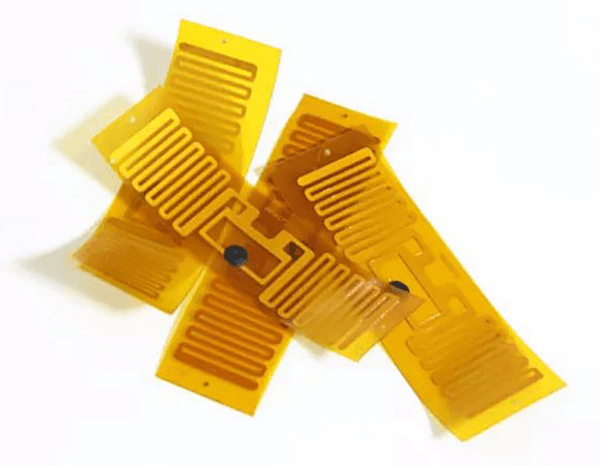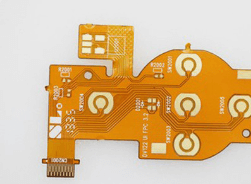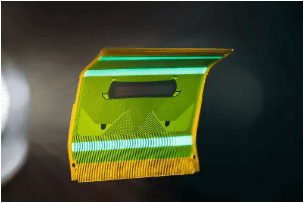
Support Team
Feedback:
support@nextpcb.comA flex board or flex circuit board is a printed circuit board that is flexible and can conform to different shapes. They are made with flexible materials as the substrate instead of rigid materials like FR4 as used in traditional PCBs.
Flex boards are designed to fit and twist into constrained and non-planar spaces. They owe this to the flexible substrate, typically made of polyimide or PET. Stiffeners may be attached to add rigidness and structural support to certain areas such as areas with surface mount parts or edge connectors.

Flex boards may be used in any application that needs a board that can flex, fold or twist rather than remain flat such as:
• Curved or bent installations like inside tubes, ducts, clothing, etc.
• Devices that require twisting or rotation like wrist wearables, medical devices, etc.
• Where traditional PCBs cannot be used due to space constraints.
When choosing a PCB material, designers need to consider factors like:
• Required flexibility
• Thermal requirements
• Chemical exposure
• Cost
• Production capabilities (some materials are harder to process)

For most generic flex circuits, polyimide and PET films are good options that offer a good balance of properties and cost. LCP, PEEK and photosensitive polyimide are used for more specialized, high-performance applications.
This is one of the most common materials for flex circuits. Kapton is a common trade name of polyimide film. It has good thermal stability, chemical resistance and flexibility.
This is a cheaper alternative to polyimide. It has good flexibility but has lower thermal and chemical resistance.
Similar to PET but with better mechanical properties and greater elongation.
This is a high-performance material with very good mechanical properties, thermal resistance and chemical resistance. But it is more expensive.
Polyetheretherketone is another high-performance material with outstanding properties. But it is also quite expensive.
This allows the flex circuit layout to be patterned photolithographically. It is harder to etch but results in a more precise substrate geometry.
This is a rubber-based material that offers the highest flexibility but has lower thermal and chemical resistance.
The key to deciding on the best flex material for your application is to define your most critical needs upfront, identify a manageable set of potential candidates, test key candidates through prototyping, and choose the best trade-off of material properties, performance, cost and schedule for your specific application. An iterative approach with feedback from your flex circuit fabrication and assembly partners can also help optimize your material selection.
The cost of a flex board can vary significantly compared to a traditional PCB, depending on several factors. At low volumes, flex boards can cost 2-3x as much as traditional PCBs due to high setup costs and complex fabrication:
Flexible substrate materials like polyimide films tend to cost more than traditional rigid PCB materials like FR4. This contributes to higher material costs for flex boards.
The processes to fabricate flex boards, like laser drilling of flexible vias and stress relief features, can be more complex and expensive than traditional PCB fabrication.
Components may need additional fixtures and protection for flex boards, adding to assembly costs.
At low volumes, the costs of setting up and optimizing fabrication for flex boards can be significantly higher. But at high volumes, the costs can become more comparable.
More complex flex board designs with many layers, tight bend radii, and stiffeners will generally cost more to fabricate.
Conformal coatings that are often needed for flex boards add to the cost. Traditional PCBs rarely require coatings.
For similar complexity, flex boards ultimately tend to cost 10-50% more than traditional PCBs due to the use of flexible substrate materials and specialized fabrication processes.
However, the cost benefits of using flex boards for a certain application can outweigh the higher material and fabrication costs - especially at higher volumes.
The key is to factor in the total cost of ownership, including how flex boards can enable design simplification, higher reliability and improved product performance for your application.
In light of the unique properties and applications of flexible printed circuit boards, designers must take into account many considerations regarding material selection, layout, routing, stack-up, the use of stiffeners, conformal coating and more. These will affect the production, assembly and performance of the boards. Some considerations are detailed below:
A substrate made of flexible materials as mentioned earlier with the appropriate bend radius needs to be selected to achieve the desired flex properties for the application.
The traces on the board need to accommodate flexing and bending and may affect the bend radius. The trace width and spacing needs to be optimized for the required flexibility.
Instead of conventional plated vias, flex boards may require flexible blind via holes or buried via holes to allow connections between layers while maintaining flexibility.
For areas that require more rigidity, you can use rigid stiffeners made of materials like aluminum or FR4. These are attached to the flex substrate.
You need to specify a minimum bend radius for the flex board, below which the traces and vias may fail due to fatigue from repeated flexing.
Any components or connectors placed on the flex board need to be securely anchored so they do not detach during flexing. This may influence the type of components that can be used on flex designs.
The design needs to include stress relief features to reduce stress concentrations at key points like component leads and via holes.
The layer stack-up can be optimized to place rigid layers on the outside for protection and flexible layers on the inside.
The board may need coating or conformal coating to protect the traces from environmental damage during flexing.

Here are a few common mistakes to avoid when selecting flexible substrate materials:
1. Not considering all important factors - Only focusing on a few key factors like cost, flexibility or chemical resistance, without evaluating other important properties that impact performance.
2. Choosing based on familiarity, not application needs - Selecting a material you have used before out of habit, without fully analyzing what your current application really requires.
3. Not testing candidate materials - Relying only on specification sheets without actually testing how potential substrate materials perform in prototypes under real operating conditions.
4. Not involving flex circuit fabrication partners early - Not consulting with your flex circuit makers until after you have selected a material, missing out on their experience and recommendations upfront.
5. Assuming all candidates are equal - Not recognizing that different substrate materials have different properties that make some better suited to specific applications than others.
6. Unrealistic expectations - Setting design requirements that no commercially available substrate material can actually meet. This often requires multiple material types or special formulations.
7. Ignoring economic factors - Overlooking the total cost of owning a certain substrate material, including fabrication costs, long-term availability and material waste.
8. Inflexible design - Designing the flex circuit in a way that limits the possible substrate materials that can be used, rather than determining material first and optimizing the design for it.
9. Underestimating production challenges - Not fully understanding how different it can be to fabricate flex circuits using some substrate materials versus others.
So in summary, the key is to approach substrate material selection systematically and collaboratively based on a thorough understanding of your application requirements and constraints, while allowing for testing and iteration during the prototyping phase.
While building flex designs can be costly and more complicated, the need for PCB boards to flex, twist and bend often necessitates flex boards. With the appropriate knowledge and experience, working with flex materials does not have to be a daunting task. NextPCB's 15 years of PCB manufacturing expertise can assist with this and having an experienced partner can make all the difference. Take advantage of NextPCB's expertise and consign your production and flex PCB assembly requirements to NextPCB.com.
Still, need help? Contact Us: support@nextpcb.com
Need a PCB or PCBA quote? Quote now